nn
n
n One of the greatest works of antiquity that hasnsurvived into modern times is the Portland Vase. Known for many years as thenBarberini Vase, it was discovered in the sepulchre of Emperor Alexander Severusnand his mother, Julia Mammæa, who were assassinated in 235, in a mound known asnMonte del Grano, about three miles outside Rome, on the road to Frascati.
n
n
n
 |
| The Tomb of Severus – Pietro Bartoli – Gli Antichi Sepolcri – 1697 |
n
n
n
nThenvase passed into the ownership of the Barberini family and was kept for overntwo centuries in their library, until it was sold in 1770 to a Scots artndealer, James Byres (it is rumoured that Donna Cornelia Barberini-Colonnanneeded funds to cover her gambling debts), and although the Pope forbade itsnremoval from Rome, the small size of the vase meant it was possible to smugglenit out. It was then bought for one thousand pounds, by Sir William Hamilton,nwho brought it to England in 1784, and soon after sold it to the DowagernDuchess of Portland. She died the following year and in 1786, the contents ofnher museum were sold at auction, and her son, the 3rd Duke, paidn£1,029 for it.
n
n
n
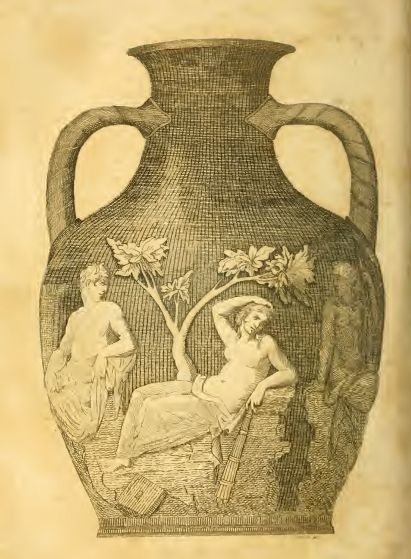 |
| Portland Vase |
n
n
n
nAt the auction, Josiah Wedgwood had determined to buy the vasenand bid £1,000, when the young Duke, seeing that he and Wedgwood were the onlyntwo remaining bidders, crossed the auction room and asked him why he wanted tonbuy the vase. When Wedgwood told him that he wanted to copy it, the Duke toldnhim that if he would stop bidding, he would buy the vase and lend it to him fornas long as he needed time to copy it. Wedgwood then busied himself examiningnthe vase, working out how best to reproduce it.
n
n
n
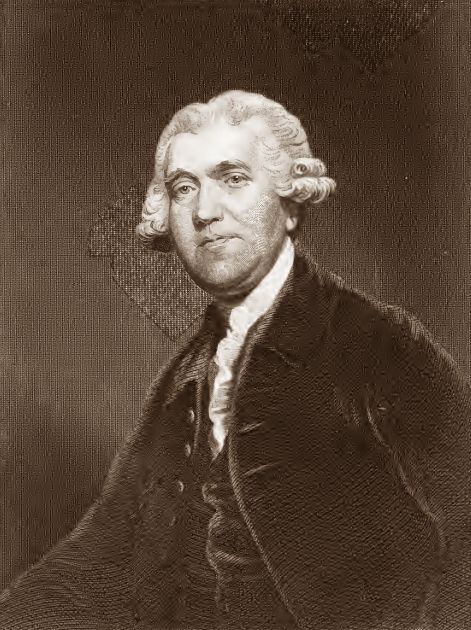 |
| Josiah Wedgwood |
n
n
n
nThe Portland Vase stands 9¾ inches tall, 7¼ inches at its widest point and isn23 inches in circumference.Some Italian antiquaries hadnthought that it was made from semi-precious stone, with opinions varyingnbetween agate, chalcedony, sardonyx or amethyst, but Wedgwood soon discoverednthat it was made from glass. It looked black, but when held up to a strongnlight, it was seen to be a very dark blue, and the figures had not been appliednlater but the dark glass had been dipped, when red hot, into opaque white glassnand the result shaped into form. When the glass cooled, the surplus white glassnwas ground back by a gem-cutter, using the same technique as a cameo cutter, anpiece of work that probably took a skilled artist several years to complete.
n
n
n
n
n
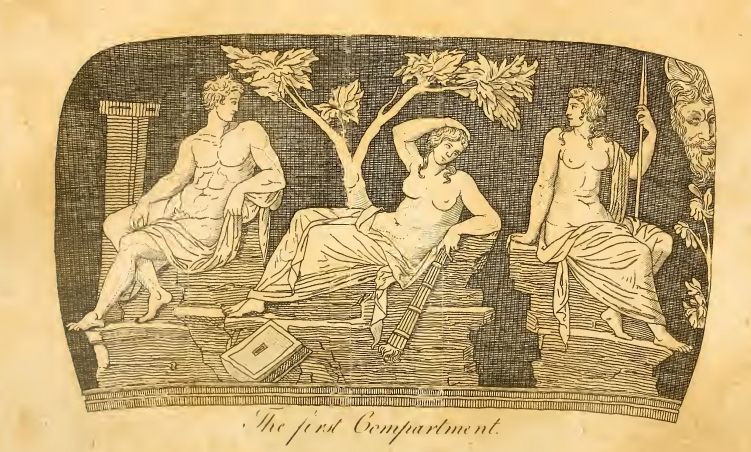 |
| The First Compartment |
n
n
n
nThe enormity of the task soon dawned on Wedgwood,nas he realised that to reproduce the vase using modern techniques and craftsmennwould cost more than £5,000. After consulting many experts on the matter, henresolved to make ceramic copies and spent the next three years working onnmixing the right colours for the ground and modelling the figures that were tonbe applied to the vase, and several of the test pieces still survive. He hadngreat problems in firing the correct colour, with cracking and blistering ofnthe ground, and the bas-relief figures lifting, being amongst his problems.
n
n
n
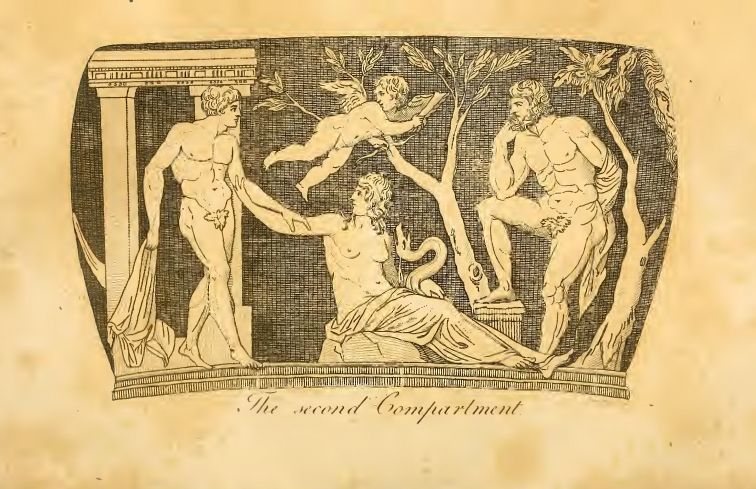 |
| The Second Compartment |
n
n
n
nAided by his chief artist and modeller, Henry Webber, and master pottersnWilliam Hackwood, William Wood and others, Wedgwood and his sons tried anvariety of bodies, colours and finishes, and spent £500 on making the mouldnuntil, in late 1789, the first perfect copy was achieved (which was sent to DrnErasmus Darwin). In April 1791, another copy was sent to London, where it wasnshown to Queen Charlotte and placed in the rooms of the Society of Antiquaries,nwhere Sir Joshua Reynolds, president of the Royal Academy, certified itsnsimilitude to the original.
n
n
n
n
n
 |
| The Handles and the Bottom of the Vase |
n
n
n
nIt was then taken to Greek Street and put on publicndisplay, with admission limited with only 1,900 tickets printed, and the copynwas then taken as the centrepiece of an exhibition tour of Europe by JosiahnWedgwood the younger. A subscription was opened in 1789, and twenty subscribersnplaced their names on the list, but this number grew over time, althoughnWedgwood had more problems in producing copies of good enough quality to sell.nThe total number of the first edition is unknown, although it is thought to benless than fifty, (Eliza Meteyard, in her Wedgwood Handbook of 1875,nlists twenty but admits that others had been lost in fires and by accident),nand the price varied between £30 and £50, depending on quality.
n
n
n
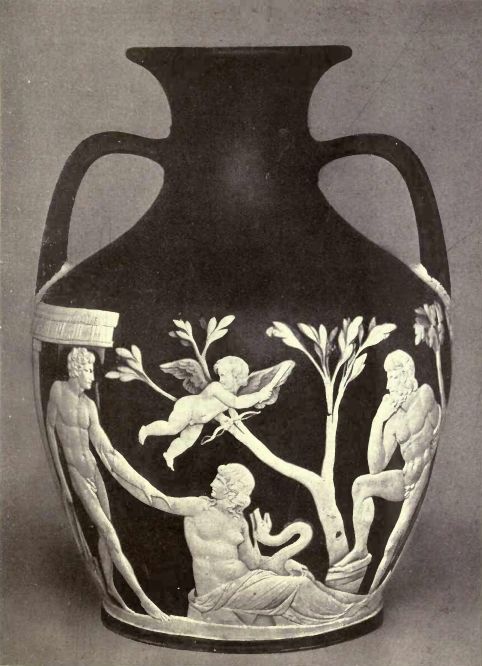 |
| Wedgwood’s Copy of the Portland Vase |
n
n
n
nInevitably,nthere were also copies, which vary in size and quality, the majority beingncoarse and the worst being simply grotesque. In 1810, the 4th Dukenof Portland placed the original vase to the British Museum, where it was onnpublic display, and where, in 1845, a man going by the name of William Lloydnthrew a nearby sculpture onto the top of the glass case holding the vase. Thenvase was broken into pieces and Lloyd arrested and charged with wilful damage,nbut due to a error in the wording of the law, which limited damage to articlesnworth less than five pounds, he was found guilty of damaging the glassnexhibition case.
n
n
n
 |
| Portland Vase |
n
n
n
nHe was given the option of a three-pound fine or an eight-weeknprison sentence, but was freed when an anonymous benefactor paid the fine bynpost. It seems that William Lloyd was a pseudonym, and the perpetrator wasnWilliam Mulcahy, a student of Trinity College, Dublin, who had spent thenprevious week drinking. A restored Portland Vase was put back on show, and hasnsince been restored twice more, and was bought for the nation in 1945.
nnn
n
nnn
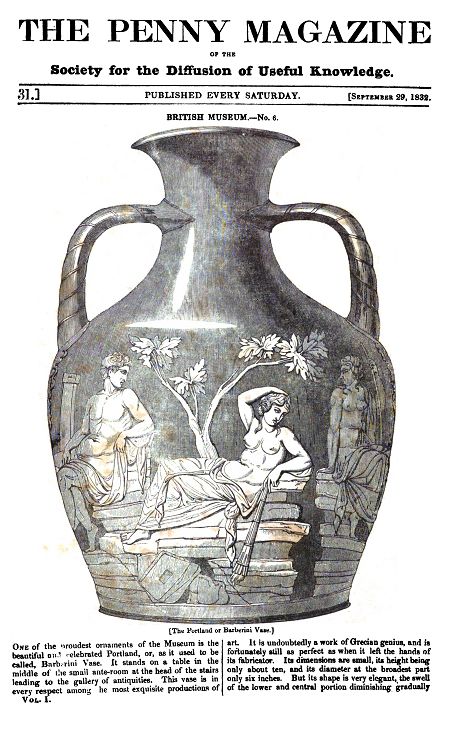 |
| The Portland Vase in the Penny Magazine September 29 1832 |
n
n
n
n
nnn
